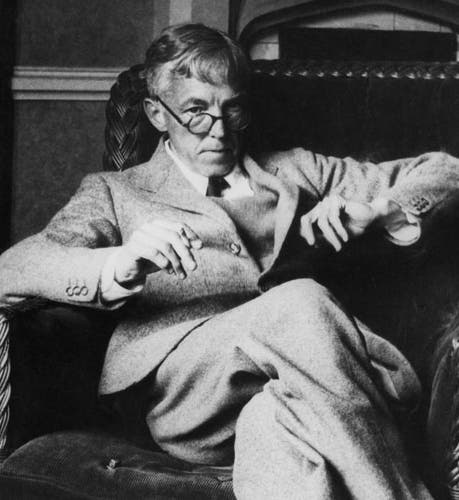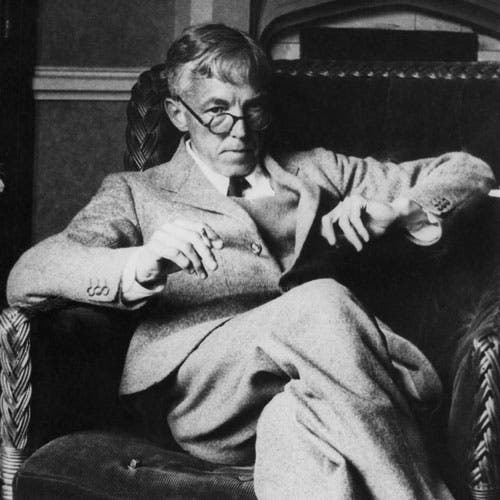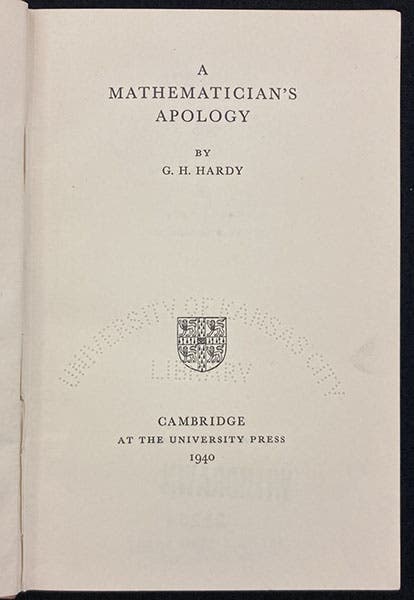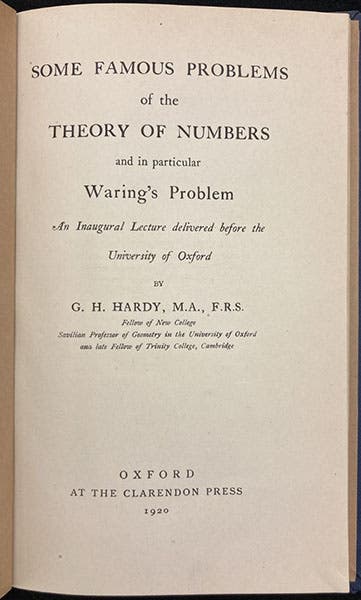Scientist of the Day - G. H. Hardy
G.H. Hardy, an English mathematician, was born Feb. 7, 1877, with the first names Godfrey Harold, which he never used, preferring "G.H." Like most mathematicians, Hardy showed his talents at an early age, being interested in numbers, factors, and primes, interests he would retain throughout his career. He attended Trinity College, Cambridge, the home of Isaac Newton and James Clerk Maxwell, and was offered a fellowship and then a teaching position. In 1910, he found a working partner in John Edensor Littlewood, and the two collaborated on many mathematical papers in subsequent years. After World War I, Hardy moved to Oxford to become Savilian Professor of Geometry, a venerable chair once occupied by Edmond Halley. His inaugural lecture was printed up, as was customary, and we have a copy in our collections (fourth image). Hardy taught at Oxford for ten years, and then returned to Trinity College, Cambridge, in 1929, where he finished out his career.
Hardy is best known for befriending and encouraging an impoverished Indian mathematician, Srinivasa Ramanujan. Ramanujan lived in Madras, where he barely eked out a living as a clerk, and during most of his working hours, and all of his free time, he churned out equations without proofs, thousands of them, nearly all of which were unknown to mathematicians, and nearly all of which were correct. Desperate for approval and support, Ramanujan sent out samples of his work to mathematicians in other countries, especially England, which governed India at the time. In January of 1913, he sent a cover letter to Hardy, and 11 pages of equations, with no proofs. To appreciate Hardy's reaction, you must realize that first-class mathematicians get dozens of letters like this, nearly always from untrained amateurs who claim to have squared the circle or proved Fermat's last theorem; the proofs are always flawed. Pointing out the errors can be time-consuming, as well as fruitless, so most scholars ignore such unsolicited letters, or have a form letter that they mail back in reply.
Hardy was intrigued by Ramanujan’s equations, especially since he had never encountered most of the equations before, yet they seemed plausible. He showed the sheets to Littlewood, who was also interested, and so Hardy replied with some encouraging words. Thus began a correspondence, and eventually Hardy invited Ramanujan to come to Cambridge, which was a difficult matter in the early stages of the First World War, but Ramunujan was finally able to do so, and he arrived in Cambridge in April, 1914, where Hardy found him rooms near his. The two worked together for almost 5 years and Ramanujan’s genius came to full flower. He was a much better mathematician than Hardy or Littlewood, or should I say, he was much more of a mathematical genius. Unfortunately, Ramanujan’s health failed him – he was a vegetarian Brahmin trying to survive in an England under war rationing – and it was suspected that he contracted tuberculosis, although it is now thought that Ramanujan had a liver disease that is a consequence of dysentery. He spent his last two years in England in sanitaria, and eventually returned home, but it was too late, and he died in the spring of 1920, only 32 years old. Hardy later said that his greatest achievement in life was discovering Ramanujan. At one point, Hardy ranked all of the world's great mathematicians on a scale of 1 to 100, with 100 being the most brilliant. He gave himself a 25, the great David Hilbert an 80, and the 100 score was reserved for Ramanujan. We have written a post on Ramanujan.
Hardy’s other claim to fame, passing over his hundreds of mathematical papers, was a slim volume written for the general public and published during the first years of the Second World War. It was called A Mathematician’s Apology, and it appeared in 1940. The book has been widely praised as a justification for the pursuit of higher mathematics, especially seemingly useless fields such as number theory, and it is said that it offers valuable insight into the mind of a mathematician. Since the book is only 93 pages long, I decided to read it and be enlightened.
I was instead disappointed, although I guess that is one form of enlightenment. Hardy had many of the disagreeable features common to the British upper class, including a snobbery that looks down on nearly everyone less privileged. He defended pure mathematics as a pursuit of beauty, and accepted its uselessness with pride, but he clearly stated several times that only original creative work is an acceptable occupation, and everything else is second-rate. This “everything else” included history, literary criticism, journalism, and any job where you are commenting on the work of others. He said he would ordinarily never be caught writing “about” mathematics, instead of doing it, but now he is too old to contribute to mathematics, so he has to stoop to journalism. He reminds me of many scientists who finish out their careers and decide to “do” history of science, as if it were a hobby like knitting that you can pick up in a few days. And Hardy seemed to have no use for the hoi polloi; he said on several occasions that most people cannot do anything well, so it doesn’t much matter what they do.
The book does present some interesting views about mathematics. Hardy at one point compared chess to number theory. Both are mathematical at heart, and both have beauty as the highest criterion. But chess, he said, is trivial, and unimportant, whereas number theory is important and has everlasting value. Yet, elsewhere, Hardy stressed that all mathematics is essentially useless, and does nothing to improve the lot of mankind. How mathematics is both important and useless is something I have yet to work out.
However, Hardy did recognize genius in Ramanujan, and he gets many points for that, and for helping Ramanujan achieve recognition. And Hardy also only gave himself a 25 out of 100 on his scale of mathematical genius, which suggests he recognized his own limitations, something you would never guess from his Apology. So perhaps that will bring him into the plus column during the Great Reckoning to come.
In his Apology, Hardy several times referred to his inaugural lecture at Oxford, so I included its title page as our fourth image, since we own it. We also have several other books by Hardy, and by Hardy and Littlewood, as well as Hardy’s Collected Papers, published after his death.
William B. Ashworth, Jr., Consultant for the History of Science, Linda Hall Library and Associate Professor emeritus, Department of History, University of Missouri-Kansas City. Comments or corrections are welcome; please direct to ashworthw@umkc.edu.










